The gray foliage of violet silverleaf provides a perfect color contrast to green shrubs seen throughout the Southwestern landscape. This drought-tolerant shrub is transformed with the appearance of violet flowers sporadically throughout the summer and into early fall. Its ability to handle full sun and reflected heat, coupled with its low maintenance needs, makes it a great choice for those who want beauty in the landscape without a lot of fuss. Although it is native to the Southwest, cultivars of violet silverleaf are most commonly seen in landscape settings.
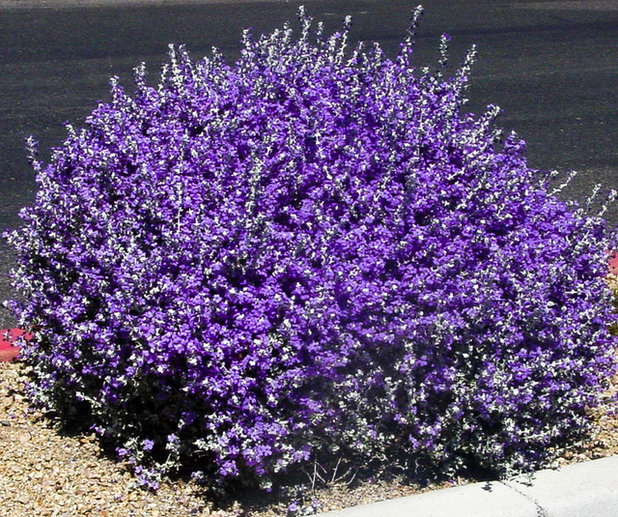
Noelle Johnson Landscape Consulting
Botanical name: Leucophyllum candidum ‘Silver Cloud’ and ‘Thunder Cloud’
Common name: Violet silverleaf
Origin: The species is native to southwestern Texas and Mexico, but these are garden varieties.
Where it will grow: Hardy to 10 degrees Fahrenheit (USDA zone 8; find your zone)
Water requirement: Moderately drought tolerant once established, but looks best when watered deeply once or twice a month in the summer and once a month in spring and fall; susceptible to rot if overwatered
Light requirement: Full sun
Mature size: 3 to 4 feet tall and wide
Benefits and tolerances: Drought tolerant
Seasonal interest: Flowers on and off in summer and early fall, often in response to humidity and rainfall
When to plant: Fall or spring
Shown: Violet silverleaf ‘Thunder Cloud’
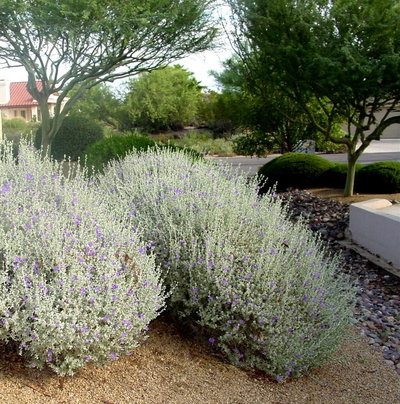
Noelle Johnson Landscape Consulting
Distinguishing traits. Violet silverleaf’s gray leaves are its most prominent feature throughout most of the year. The plant’s silvery color comes the stems and leaves, which are covered in tiny, white hairs. Each shrub consists of tightly spaced, narrow branches.
Shown: Violet silverleaf ‘Thunder Cloud’ planted on a slight slope
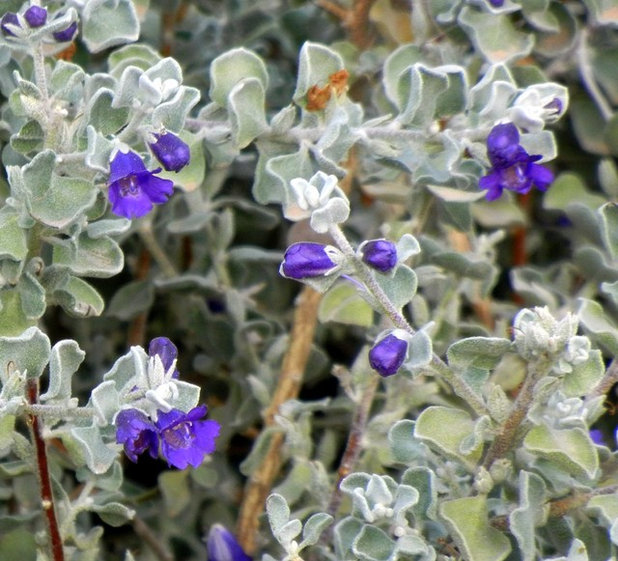
Noelle Johnson Landscape Consulting
Although the silvery white foliage is of huge interest in the landscape, sporadic flushes of blooms completely transform these shrubs into softly mounded shapes covered in deep purple. The flowers appear off and on in summer, with the heaviest bloom occurring in fall — usually in response to increased humidity or rain.
While violet silverleaf doesn’t flower nonstop through the summer, it is well worth waiting for the periodic flushes of blooms that cover the entire shrub. The flowers, like the leaves, are small, but are often produced in such large amounts that it can be hard to see the foliage underneath.
In the landscape the cultivars Silver Cloud and Thunder Cloud are most often used. Both cultivars are very similar in appearance, but Thunder Cloud is more compact in size and produces more flowers than Silver Cloud. As a result, the cultivar Thunder Cloud is more prevalent.
Shown: The foliage and flowers of violet silverleaf ‘Thunder Cloud’

Noelle Johnson Landscape Consulting
How to use it. Violet silverleaf can stand alone as an accent shrub or be placed near shrubs and ground covers with dark green foliage to draw attention to its silvery foliage. Use violet silverleaf to create an informal hedge or group three to five to help anchor the corners of the landscape. It is also suitable for planting near patios or swimming pools, where its ability to thrive in hot, reflected sun and its low litter can be appreciated — just be sure to keep it away from areas where oversplash can occur.
Pair it with angelita daisy (
Tetraneuris acaulis), red bird-of-paradise (
Caesalpinia pulcherrima), desert ruellia (
Ruellia peninsularis), Florida hopbus
h (
Dodonaea viscosa) or gold lantana (
Lantana ‘Gold Mound’). You can also plant it near Green Cloud Texas ranger (
Leucophyllum frutescens ‘Green Cloud’), which is a closely related species.
Because of its issues with poorly draining soils and overwatering, Violet silverleaf is an excellent choice for planting along slopes.
Shown: Violet silverleaf ‘Thunder Cloud’ growing among foothills palo verde (
Parkinsonia microphylla) and bougainvillea (
Bougainvillea sp)
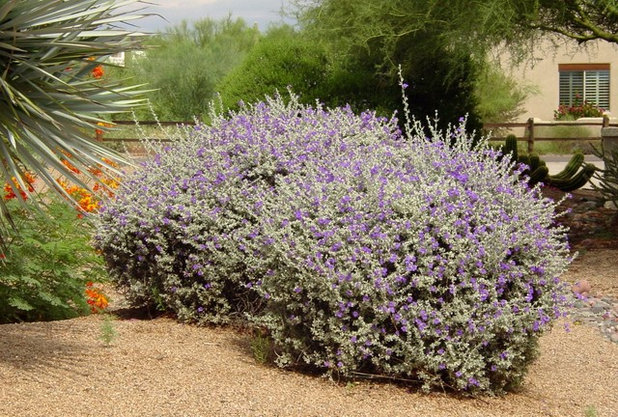
Noelle Johnson Landscape Consulting
Planting notes. While violet silverleaf is easy to grow and maintain, it must have well-drained soil and full sun to grow its best. Dig a hole three times as wide as the rootball, which will enable the roots to grow outward more easily and help the shrub to become more easily established.
Shown: Violet silverleaf ‘Silver Cloud’ shrubs next to orange-flowering red bird-of-paradise
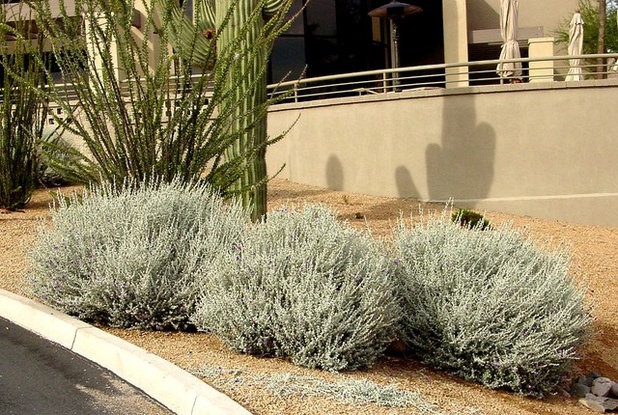
Noelle Johnson Landscape Consulting
Avoid the tendency to shear or excessively prune violet silverleaf, which robs this shrub of its attractive natural shape and removes emerging flower buds. Any pruning should be done in March and should concentrate on removing any overly long or wayward branches; use a pair of hand pruners, not hedge trimmers.
Taking care of this shrub couldn’t be any easier. It doesn’t require any fertilizer, and it will thrive in seemingly inhospitable areas with full, reflected sun. The only danger to violet silverleaf is overwatering, which can cause it to rot. Planting it in well-drained soil and restricting watering to once or twice a month will prevent overwatering problems.
Shown: Properly pruned violet silverleaf; use hand pruners to lightly prune by removing wayward branches to achieve the desired shape





